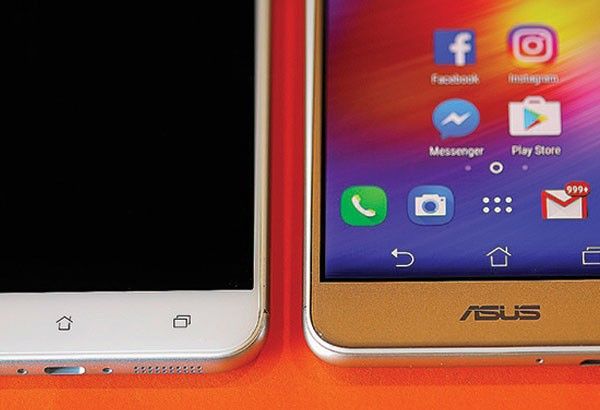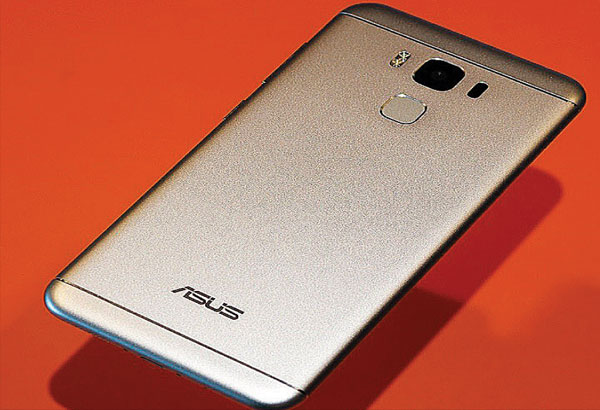Asus ZenFone 3 Max 5.5-inch review

MANILA, Philippines – Asus is coming out with a bigger, updated version of the ZenFone 3 Max that keeps the design of the 5.2-inch Max announced in mid-2016 but improves on the latter in every possible way.
It’s going to cost more, of course — around $80 more for the base model with 3GB of RAM, quite an ask for a budget smartphone.
But does the 5.5-inch ZenFone 3 Max rise to the occasion? Oh, yes. Absolutely.
Different, From Head To Toe
2016 is the year that Asus, after much criticism and even mockery, truly doubled down on design and came out with guns blazing. The ZenFone 3 is, by far, the best-looking of the (traditional) ZenFone bunch. It’s no surprise, then, that Asus has revealed a major facelift of its ZenFone Max range, this time opting for metal on the back instead of glass, like on the ZenFone 3.

Placed side by side, one may find it difficult to believe that the ZenFone Max is only one generation older than the ZenFone 3 Max. Really, the new Max seems at least two update cycles ahead, with its curvier styling and sand-blasted finish. The stark departure from last year’s model is, among other things, what makes this refresh hard to ignore.
The ZenFone 3 Max ditches the polycarbonate and basketball-leather material of the original in favor of a more upscale identity that underscores Asus’ newfound design prowess and fits in with other ZenFones released this year. The updated design means the back cover is no longer removable. A hybrid SIM and SD card tray is located on the left side; it can hold two SIM cards or one SIM and one SD card at once.
A piece of ever-so-slightly curved glass sits atop the front panel. The tapers along the edges not only makes the transition from glass to metal seamless, but also gives the user a better feeling when holding the handset.
Around the back, the larger variant of the ZenFone 3 Max retains a laser-assisted autofocus for the camera, and adds a fingerprint reader. The latter unlocks the phones almost instantaneously, but it isn’t as accurate as the sensors found in the Oppo and Vivo smartphones.
But arguably the best news of all is that the 5.5-inch Max refresh fits in the hand well, in a way that doesn’t necessarily apply to other phones its size. We were able to wrap our fingers around the entire width of our unit for a secure grip.
A thinner design is partly to credit for that; however, it comes at the cost of a larger battery. The original Max carried a 5,000mAh power pack, while the 2016 editions cram a 4,100mAh cell inside their more slender frames. But, of course, the question is how does not having the same, high-capacity battery impact the phones’ longevity in day-to-day operation, and we’re going to get to that in a bit.
For now, let’s discuss how different the 2016 ZenFone 3 Max 5.2- and 5.5-inch models are from one another. Apart from the size, the larger Max steps up to a sharper LCD panel (now of the 1080p variety) and boasts a snappier octa-core processor with up to 4GB of RAM and a rear camera that doesn’t disappoint.
On the hardware front, one would find a few nuances, like the row of capacitive buttons on the 5.5-inch Max. The buttons are not backlit, and will likely leave users fumbling in the dark.
A single speaker can be found at the bottom of the bigger Max, a location we actually prefer. It didn’t get in the way of anything we did while we held the phone vertically. Naturally, it didn’t get muffled when we placed the device on its backside.
The 5.2-inch Max’s camera lacks laser autofocus, which could be the most probable reason for its wonky focusing work.
Despite the obvious difference in screen size, the 5.5-incher’s footprint is barely larger — in no small part thanks to those narrow bezels around the display.
Casual Photographer
The 5.5-inch Max has that big eye of a 16-megapixel camera in the middle of the rear; the 5.2-incher’s camera sensor, meanwhile, is a 13-megapixel affair. They have an f/2.0 and f/2.2 aperture lens, respectively. Hence, the former can let in more light, resulting in more detailed snaps with less noise. Both cameras are capable of good color and contrast reproduction.
Graininess, however, is a concern for the smaller Max, whether shots are taken in broad daylight, indoors, or in low light. Focusing is a bit of an issue, too, as the focus tends to recoil and subsequently default to the center of the frame. A good workaround, we found, is to manually focus by long-pressing the subject in the viewfinder until a green crosshair pops up.
As for their front-facing cameras, the 5.5-inch Max sports an eight-megapixel shooter, while the smaller model takes five-megapixel selfies. Colors are accurate; details are fairly sharp; and shutter lag is negligible.
For users seeking more control, the default camera app has manual settings for ISO, white balance, shutter speed, and more.
The difference in image quality between the two Max phones can be seen in the sample shots below. No doubt, we prefer the photos taken with the 5.5-inch Max, for reasons that should be too obvious to many. The normal Max is good for casual photography, but we don’t recommended making it a primary option.
Mr. Big
The larger Max offers a notable upgrade over its predecessors, moving up to an octacore Qualcomm Snapdragon 430 processor that’s backed by either 3GB or 4GB of memory. The 5.2-incher, by contrast, uses an entry-level chip from MediaTek that simply isn’t up to par with its rivals. Many other phones could outpace it for far less money. Last year’s iteration now finds itself in a similar situation.
The Snapdragon 430 has Asus flexing its performance muscle in the category again, with the 5.5-inch Max scrolling through menus, executing tasks, and launching programs without obvious delays. Our unit comes with 3GB of RAM and 32GB of storage, and it handles demanding games well.
All ZenFone Max models, including the original, run Android Marshmallow, or should be upgradeable to the semi-recent Google operating system. As per usual, Asus’ heavily customized interface comes bloated with extra software, most of which can be uninstalled.
Now, on to that question on everyone’s mind: Does this year’s bigger, better Max match the stellar battery life of the previous model? Simply put, no — but it still lasts long. Two days with normal use, even if you’re pushing the phone real hard, is our collective observation.
Interestingly enough, the 5.2-inch Max doesn’t seem to be up to the task of doing marathon runs; we’re seeing about a day and a half of doing the same stuff on a single charge.
Is This Your Gadgetmatch?
The short answer is yes. Asus’ 5.5-inch ZenFone 3 Max is one of the best all-around choices on the block, and the expected price hike should be justified by the improvements outside and under the hood. The version with 3GB of RAM and 32GB of storage is expected to retail at around $260, after taxes.
The smaller Max, currently priced at $180, is a good phone, and you shouldn’t kick yourself for not waiting long enough. Outside of Asus and industry insiders who are heavily moderated by non-disclosure agreements, who could’ve known that something better (and more expensive) would eventually come out? But it’s already coming to stores. Before the year ends, we’re told. Chuck it to experience, and move on.
If you’ve already decided on the 2016 Max but haven’t bought one yet, wait for the 5.5-inch version. You won’t regret it.
- Latest



























